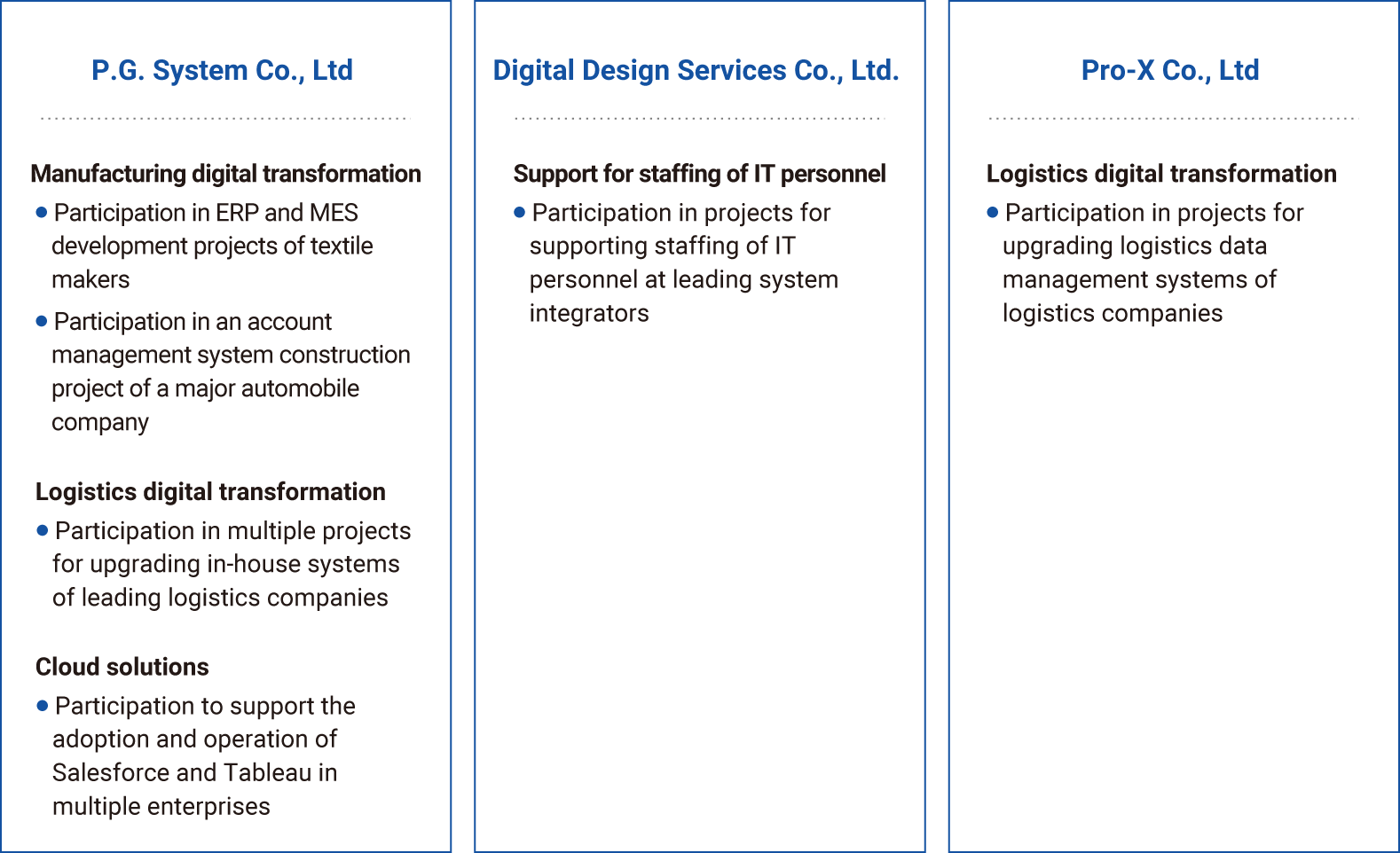Towards sustainable and stable growth
After 2026, we will aim for organic growth with a sales growth rate of at least 15%. Because we have a strong free cash flow, we will promote M&A and achieve further growth as a Group.
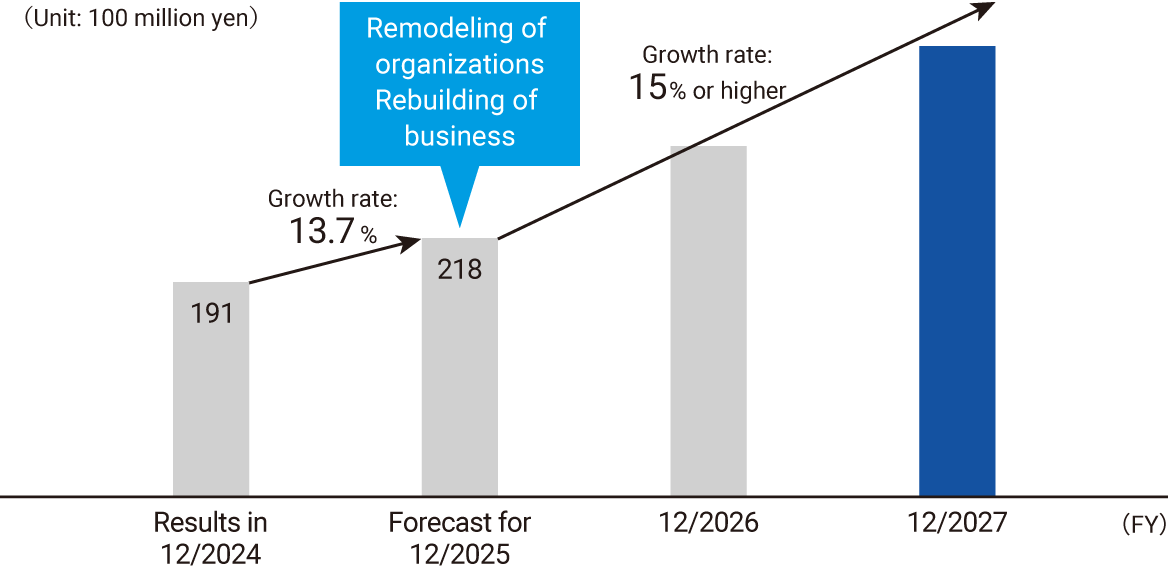
Business strategy
We have traditionally operated under a business division system with a vertically structured value chain. Products and their delivery systems are integrated with sales, with each division taking full responsibility for projects they secure – a siloed structure. While this structure is very effective for project delivery to clients, it posed structural challenges in cross-selling across divisions, particularly in sales, and limited lead generation.
To address these challenges and strengthen our sales capabilities, we undertook a large-scale organizational restructuring in FY2025. By clearly defining roles, namely the “First Phase” responsible for new clients for each product and the “Main Phase” responsible for cross-selling our entire product range to existing clients, we aim to enhance sales activities.
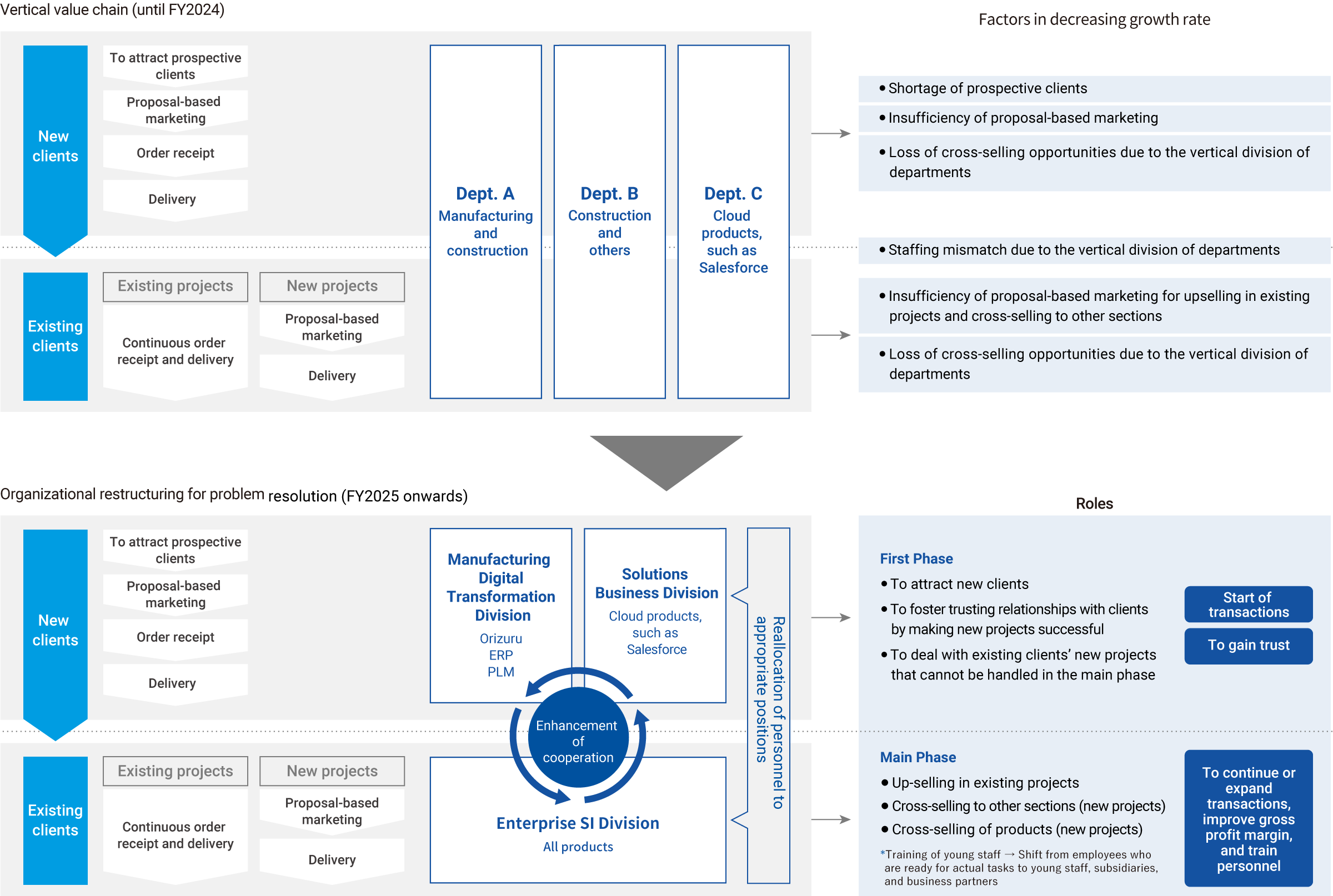
Cloud Solutions
In the past, many big companies did not want to change the traditional business process, which drove them to invest a lot of money in constructing original systems. However, the construction of such a system was dependent on outside vendors, which made it difficult to evolve the system swiftly and flexibly. On the other hand, small- and medium-sized enterprises introduced low-cost package systems due to their limited investment capacity. This resulted in issues such as an inability to realize the desired business processes and difficulties enabling linkage between multiple package systems. The CCT Group realizes digital transformation by utilizing standard cloud solutions for common fields and introducing an original system capable of high-level reproduction of traditional business processes for fields of competition where the strengths of each customer are demonstrated. We are strengthening our support for proven cloud products in order to deliver systems that combine both of these fields using “cloud solutions” plus “Orizuru.”
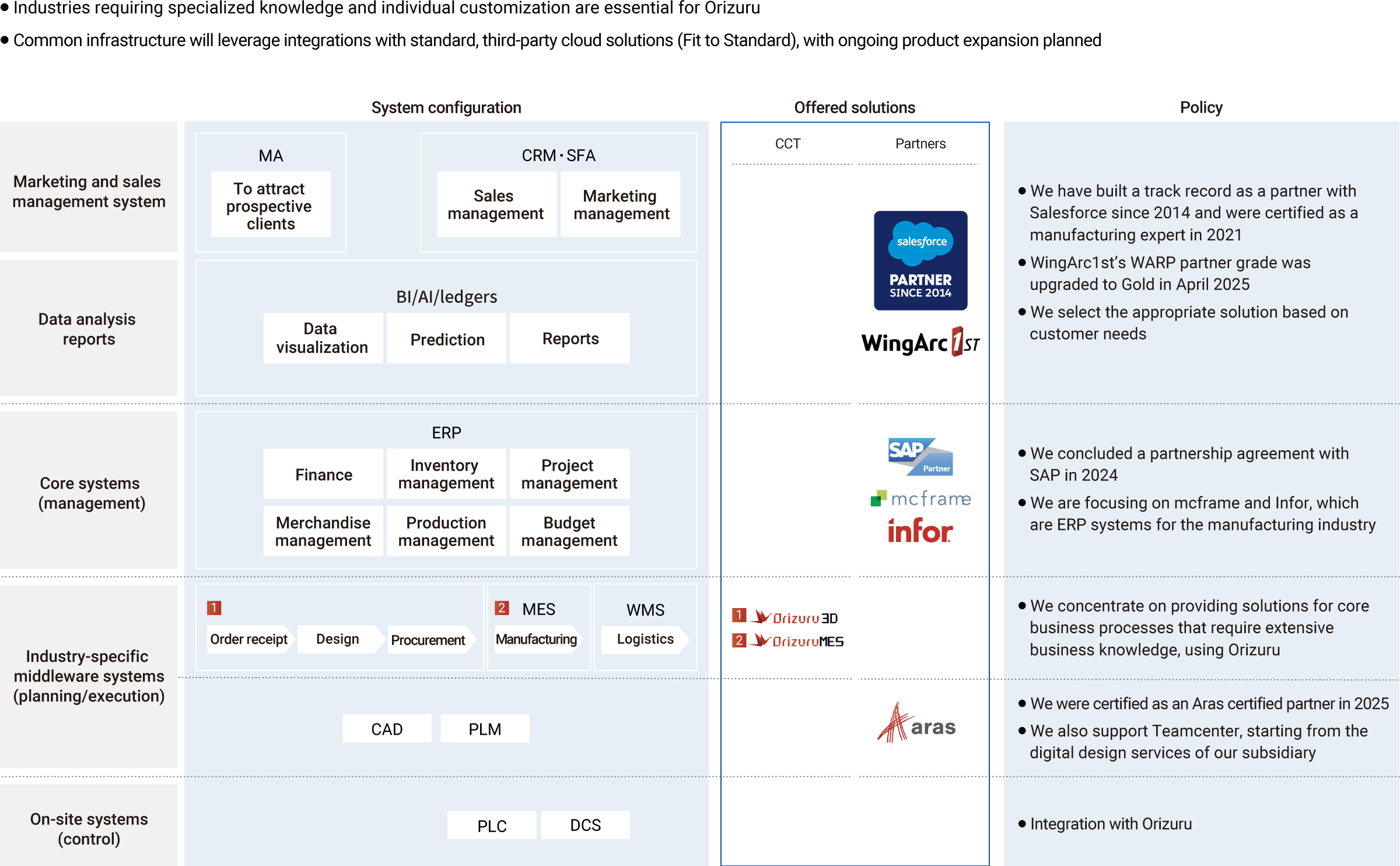
Expanding business partners
Expanding transactions with major system integrators is crucial for continuous growth in the Support for Staffing of IT Personnel business. Demand for IT personnel from major system integrators is strong and meeting this demand not only requires expansion of “Ohgi,” but also an increase in the number of in-house personnel who utilize “Ohgi.” Since our establishment, we have been steadily building our network with business partners by visiting small- and medium-sized IT enterprises individually. As a result, the Ohgi” network has now expanded to about 5,900 companies, mainly in the Tokyo metropolitan area. Going forward, we will pursue expansion of the “Ohgi” network in regional areas at the same time as the network in the Tokyo metropolitan area further expands. First, we will accelerate the expansion of “Ohgi” in regional areas by networking small- and medium-sized IT enterprises in Osaka and Fukuoka, where the Company has sites, as well as in areas where Group companies have their main sites. We will expand the leverage we have established in the Tokyo metropolitan area nationwide using our own sites and Group companies as hubs.
As of December 31, 2024
Human resource strategy
We are actively recruiting both new graduates and experienced professionals, with a particular focus on new graduate hiring. We have traditionally been strong at recruiting graduate students from national and public universities, particularly in science and engineering. However, recently, the number of undergraduate and humanities students we hire is also increasing. Since personnel engaged in generic tasks can be replaced by business partners, our policy is to hire project managers, leaders, and managerial personnel (including candidates) as full-time employees.
For both Support for digital transformation and Support for Staffing of IT Personnel, the key to future growth is project managers (PM) and project leaders (PL). Securing a sufficient number commensurate with our business scale is crucial, so we estimate specific numbers and incorporate them into our plans.
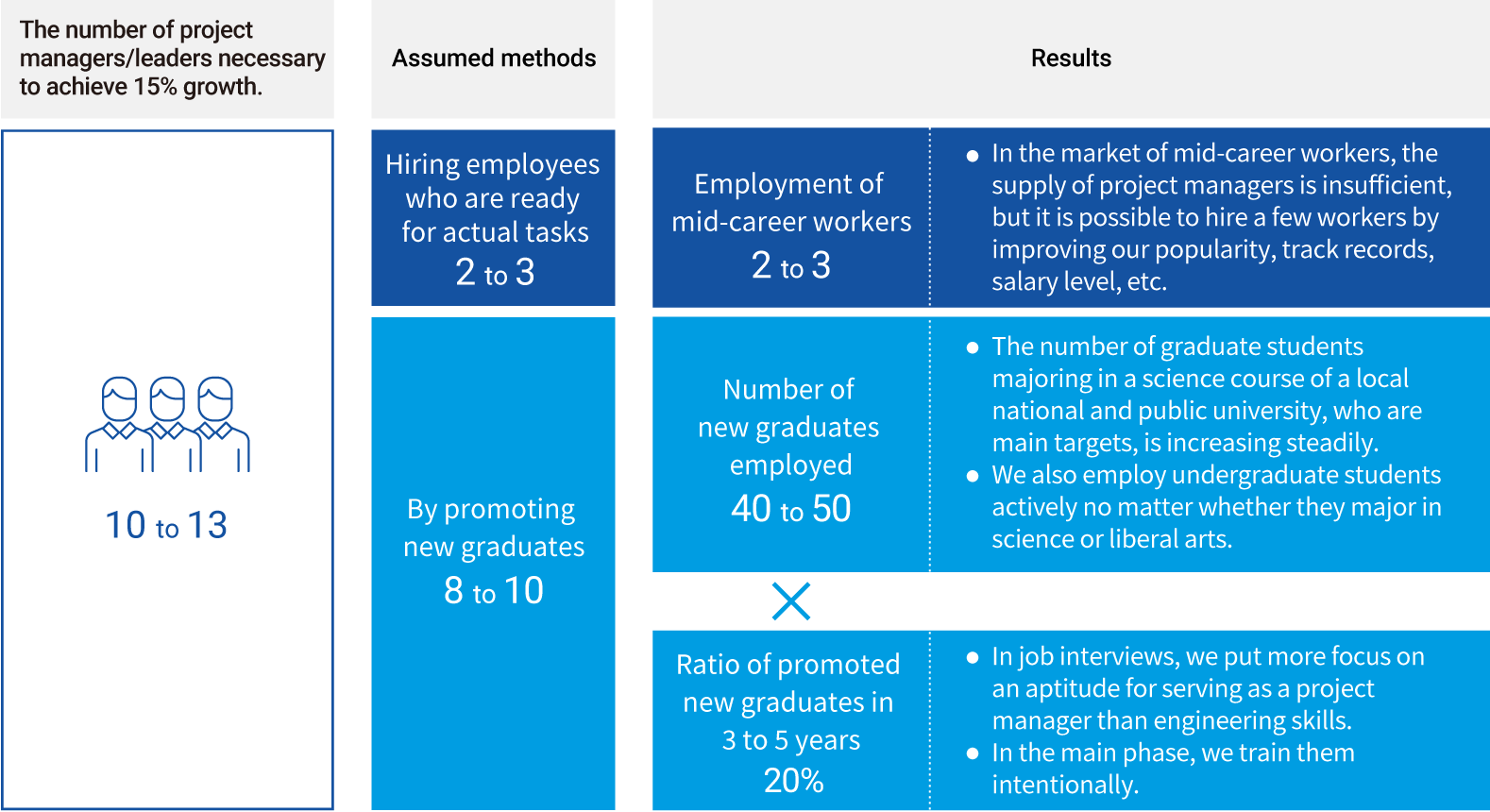
M&A Strategy
The two main objectives of M&As are to expand human resources and strengthen support for digital transformation. The target companies for M&As aimed at expanding human resources are mainly small and medium-sized IT companies in rural areas, and we expect them to function as hubs for the nationwide deployment of leveraged management that we have built in the Tokyo metropolitan area. We intend to reduce outsourcing costs by having engineers of subsidiaries participate in our projects, and to further improve profitability by having subsidiaries proactively leverage the human resources of neighboring small and medium-sized IT companies. In particular, the acquisition of companies specializing in system development for the manufacturing, construction, and logistics industries, as well as the integration of cloud solutions that we will focus on in the future, will enable us to handle operational and maintenance projects, as well as small to medium-sized projects, and directly contribute to strengthening our group’s ability to secure contracts. Through M&As, we aim to open up opportunities for engineers from small and medium-sized IT companies in local regions to participate in cutting-edge projects in Tokyo, contributing to job atisfaction, skill improvement, and even narrowing the income gap between regions. Target companies for M&As with the aim of strengthening support for digital transformation are assumed to have superior technology in certain fields, and the number is smaller compared to M&As aimed at expanding human resources. We will fund smaller M&A deals with cash and larger deals with borrowing.
M&A policy
| Purpose | To enrich the lineup of products for digital transformation | To secure human resources and reduce outsourcing expenses |
|---|---|---|
| Target |
IT enterprises with forte in areas that match our policy to expand the support for digital transformation areas |
Mainly the local small and medium-sized IT enterprises |
| Results |
■2023 ■2024 |
■2023 ■2024 |
